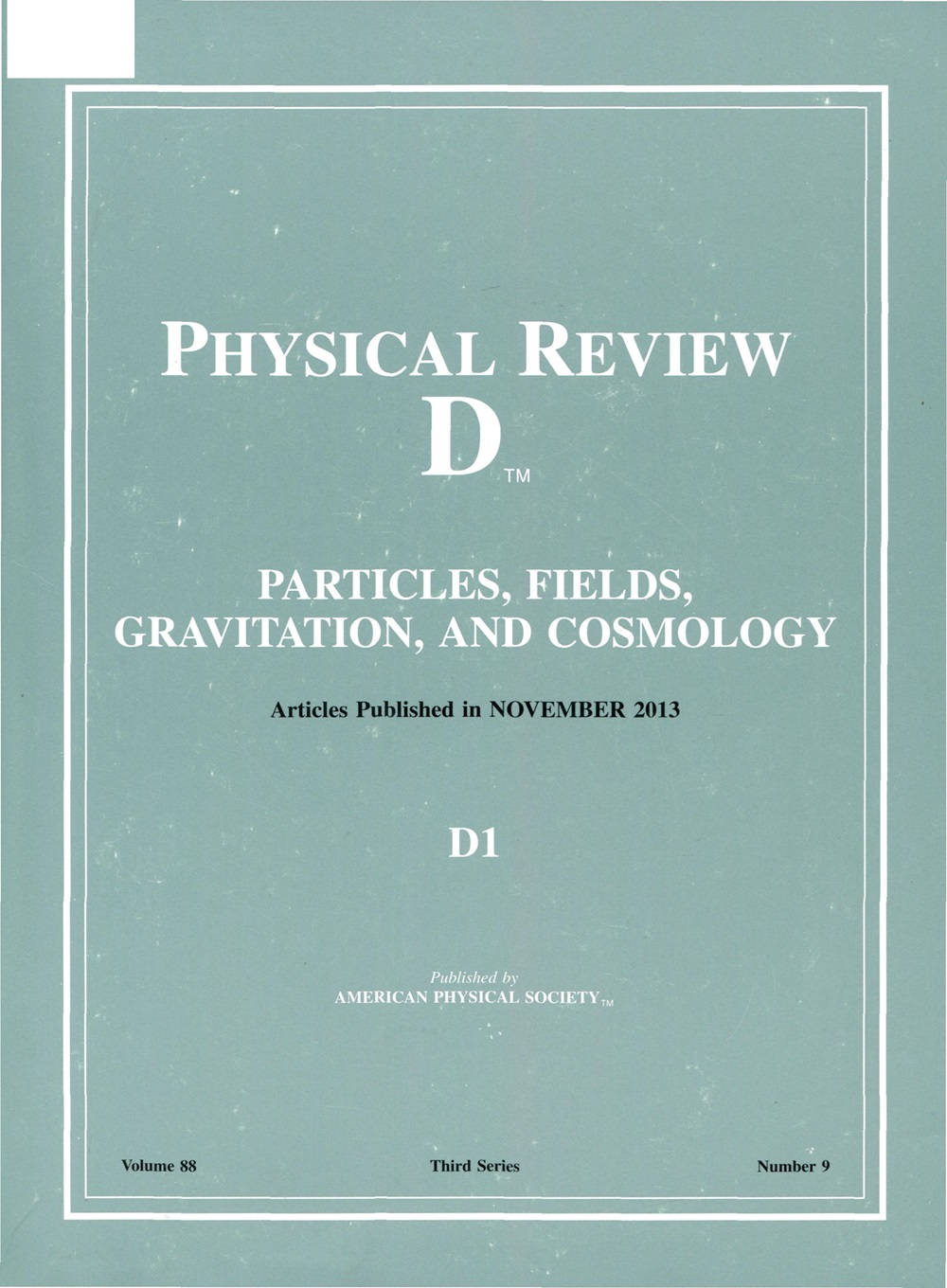具有大质量夸克的双味色超导物质中QCD轴子的性质
IF 5
2区 物理与天体物理
Q1 Physics and Astronomy
引用次数: 0
摘要
通过同时考虑夸克-反夸克和双夸克通道中的标量和伪标量凝聚,研究了具有瞬子诱导相互作用的Nambu-Jona-Lasinio模型中低温中密度下QCD轴子的性质。导出了非零角θ=a/fa时四型凝聚夸克的解析色散关系。计算了手性对称破缺相和双味色超导相的轴子质量、四次自耦合和轴子势。使用常用的模型参数,我们发现,由于彩色超导的出现,手性相变不仅不会导致轴子质量和自耦合的显著降低,反而会导致它们的明显增强。作为θ函数,轴子势表现出近似π的周期,这与不考虑彩色超导性的情况有很大不同。在彩色超导的情况下,计算了轴子畴壁的表面张力。2025年由美国物理学会出版本文章由计算机程序翻译,如有差异,请以英文原文为准。
Properties of the QCD axion in two-flavor color superconductive matter with massive quarks
We investigate the properties of QCD axion at low temperature and moderate density in the Nambu-Jona-Lasinio model with instanton induced interactions by simultaneously considering the scalar and pseudoscalar condensates in both quark-antiquark and diquark channels. We derive the analytical dispersion relations of quarks with four-type condensates at nonzero theta angle θ=a/fa. The axion mass, quartic self-coupling, and the axion potential are calculated in both the chiral symmetry breaking and two-flavor color superconducting phases. Using the commonly adopted model parameters, we find that, due to the emergence of color superconductivity, the chiral phase transition not only does not lead to a significant decrease in axion mass and self-coupling but rather results in an obvious enhancement of them. As a θ π Published by the American Physical Society 2025
求助全文
通过发布文献求助,成功后即可免费获取论文全文。
去求助
来源期刊

Physical Review D
物理-天文与天体物理
CiteScore
9.20
自引率
36.00%
发文量
0
审稿时长
2 months
期刊介绍:
Physical Review D (PRD) is a leading journal in elementary particle physics, field theory, gravitation, and cosmology and is one of the top-cited journals in high-energy physics.
PRD covers experimental and theoretical results in all aspects of particle physics, field theory, gravitation and cosmology, including:
Particle physics experiments,
Electroweak interactions,
Strong interactions,
Lattice field theories, lattice QCD,
Beyond the standard model physics,
Phenomenological aspects of field theory, general methods,
Gravity, cosmology, cosmic rays,
Astrophysics and astroparticle physics,
General relativity,
Formal aspects of field theory, field theory in curved space,
String theory, quantum gravity, gauge/gravity duality.
 求助内容:
求助内容: 应助结果提醒方式:
应助结果提醒方式:


